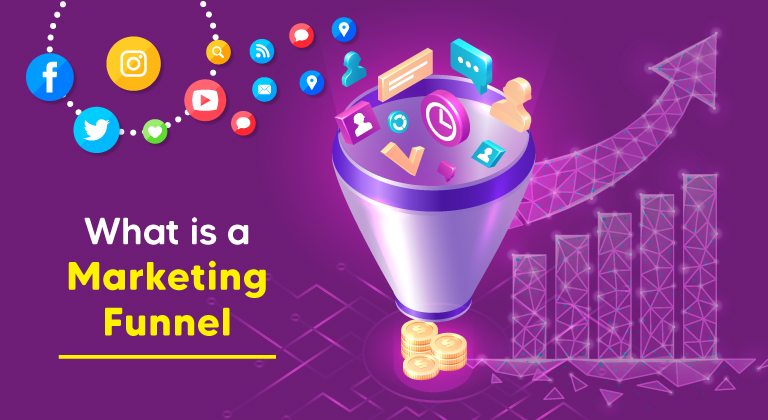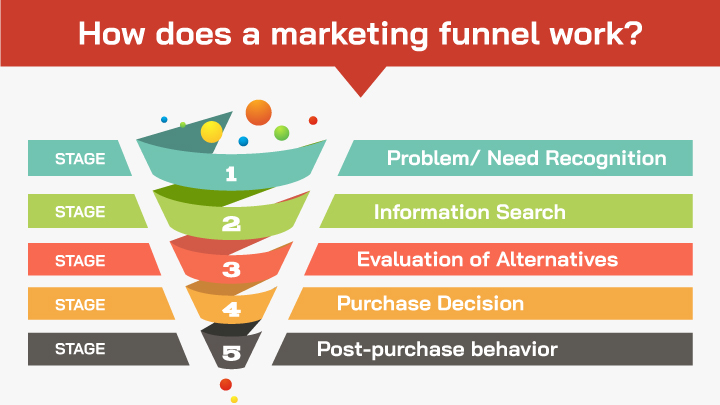
What is a marketing funnel and how does it work?
- Jan 15, 2022
Digital Marketing
What is a marketing funnel?
A marketing funnel is a roadmap curated by a company to guide the potential customers from their first interaction with the brand to become paying customers. This roadmap comprises paid ads, social media, SEO, content marketing, and many other digital marketing channels. While the concept is quite simple, however sometimes they can turn out to be very complex.
Maybe you have never created a marketing funnel, but you work on it without even knowing about it.
How does a marketing funnel work?
A marketing funnel works through stages from the broader section at the top that pulls in many people, through the narrower section in the middle, and down to the even narrower section at the bottom. That is why the most essential thing to understand when it comes to creating a marketing funnel is that you need to look at it from the customer’s perspective.
Let’s look at the different stages of the marketing funnel:
Stage 1: Problem/ Need Recognition
Recognizing that you have a problem is the start of the buying process. If you don’t know you have a problem, then why would you involve in a purchase? You can do a little bit of research, but because your problem is so pressing, you won’t take long. Other products or services will need much more education.
Stage 2- Information Search
Identifying a problem or requirement is the step that triggers a search for additional data and brings possible leads to the next phase of the funnel. The strategies used to gather information sometimes vary based on the size and scope of the purchase. At this point, people are not looking for promotional content, they are looking to learn more about potential solutions for their needs.
Stage 3- Evaluation of Alternatives
Once the customers are aware of a solution, the next move is to compare the alternatives that your ad shows. Again, the time spent at this stage will differ based on the type of purchase being anticipated. If you have inadequate resources, you don’t have to initiate at the top of the funnel. You can simply initiate by targeting the customers at the bottom of the funnel for maximum conversions.
Stage 4: Purchase Decision
The purchase decision is the usual assumption of the preceding three stages. At this stage of the marketing funnel, the potential customer has determined that they have a problem, researched their options, and decided which one is perfect for them. Now they just need to put in money. In this phase, optimizing the website/webpage/landing page for conversions is the best way to increase sales.
Stage 5: Post-purchase behavior
The customer journey doesn’t end when they have purchased something from you. What happens after the sales is equally important. If your new customers are greeted by a thoughtful onboarding process, they will become your loyal customers and refer you to their friends and colleagues. When they are assertive, they are more likely to pass on their gratification to others in the form of references and product endorsements.
Ensure that the customer is happy because if they are disappointed, they are more likely to request refunds, write negative reviews, and obviously won't recommend you to their friends and family. There is not much content you can generate to help enable a good post-purchase experience, but you can constantly make sure to provide them with a top-notch product.
You can also provide customer support or solicit feedback to understand their post-purchase experience.
Digitalize your marketing with Wits Digital, we are the best digital marketing agency in delhi. We understand your business goals and help you to make your business, digital marketing strategies a perfect mix of a marketing plan that achieves your goals and target.
Leave a Comment
Your Phone Number will not be published.






